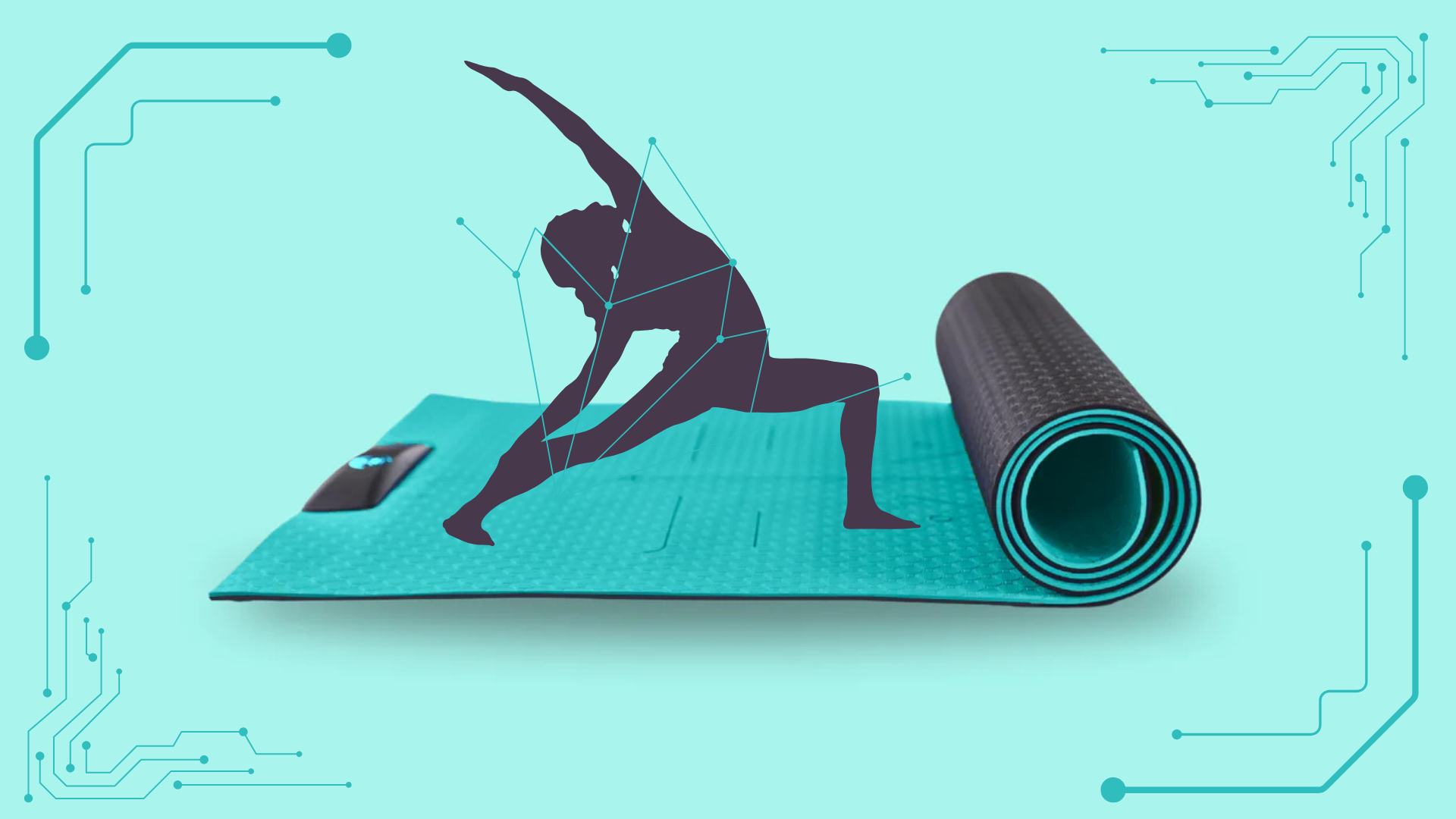Published October 21, 2025 07:36AM
In Yoga Journal’s Archives series, we share a curated collection of articles originally published in past issues beginning in 1975. These stories offer a glimpse into how yoga was interpreted, written about, and practiced throughout the years. This article first appeared in the November/December 1985 issue of Yoga Journal. Find more of our Archives here.
“Why write about chakra?” asked a friend. “Everyone knows about them already.”
But do we? Take the third chakra, for example. Is it located at the navel or at the solar plexus? Those of us who answer “the navel” probably first learned about chakras from an Asian source, and those who answer “the solar plexus” probably got our chakra lore from modern Western clairvoyants or early Theosophists. How many chakras are there? Seven? Eight? Five? Twenty-three? And what is the second chakra called? Those of us who say “spleen” have been bamboozled by a 1920s bit of prudery and switch-hit chakra replacement perpetrated by early Theosophists Powell, Leadbeater, and friends. (See sidebar.) Even the word “chakra” is often mispronounced: the “ch” should be hard, as in “church” not soft, as in “charade.”
Most of us involved in yoga, meditation, or the human potential movement think we know about chakras because we tend never to question our assumptions, especially those drawn from our spiritual tradition, yoga teacher, metaphysical bookshelf, or favorite holistic health practitioner. Also, many of us feel those chakras in there vibrating and therefore assume that others experience the very same sacred power spots as well. But don’t you believe it! From recent laboratory investigations of chakras to the sacred texts of venerable traditions and the clairvoyant observations of the hottest New Age authors, there is considerable disagreement as to the number, location, and function of the chakras. In this article we will try to understand why.
What Do Chakras Do?
Most clairvoyants and yogis do agree that chakras function as focal points for the reception and transmission of psychophysical energies. For example, Dr. Brugh Joy, physician, healer, and author of Joy’s Way, calls the chakras “an interdimensional transducing system,” capable of being directed by thought, which converts energy into matter and vice versa, transcending the limitations of space and time. He sees each chakra as analogous to a prism that “splays out different aspects of some primary energy configuration through the body.”‘
Indian yoga expert B. K. S. Iyengar writes, “As antennae pick up radio waves and transform them into sound through receiving sets, chakras pick up cosmic vibrations and distribute them throughout the body.” David Tansley, an English homeopath and radionics therapist who works with chakras and healing, believes that the chakra system picks up energies originating from our physical, emotional, and mental selves, from the collective unconscious of our nation and our planet, and from the cosmos at large. “All make their impact upon the unit of human consciousness…galvanizing [us] into action and determining [our] moods and characteristics.”
Another way to understand the function of chakras is to see ourselves as clairvoyants do. We are not, they inform us, upright physical creatures, but shimmering ovoids, multilayered sheaths of “matter” of varying densities surrounding and interpenetrating a relatively small physical core. These sheaths, or “bodies,” are located in approximately the same place but exist in different dimensions: the causal body is the finest, followed, in order of increasing density, by the mental, astral, etheric, and physical bodies. (Sources differ as to the numbers and names of these bodies.)
Chakras appear as revolving or spinning vortices of energy in a vertical lineup along our torsos, each chakra “specializing” in a different aspect of our physical, emotional, and mental experience. Each chakra exists simultaneously in all bodies, we are told, and steps up or steps down the frequency of energy as the energy flows from one dimension to another. Like “time tunnels” or “space warps,” chakras link up and pass information between the various realms of our multidimensional selves.
Chakras in the Lab
In the early 1960s Dr. Shaffica Karagulla, a Turkish-born physician, conducted a medically unorthodox experiment. She interviewed dozens of clairvoyants, or “sensitives,” about what they saw when they looked at the human form. One in particular, Diane, had an especially powerful gift:
She observes a “vital or energy body or field” which substands the dense physical body, interpenetrating it like a sparkling web of light beams. This web of light frequencies is in constant movement…[and] extends in and through the dense physical body and for an inch or two beyond the body and is a replica of the physical body…Within this energy body or pattern of frequencies she observes eight major vortices of force and many smaller vortices, which look like spiral cones…seven of these major vortices are directly related to the different glands of the body.
In 1973, in Los Angeles, Dr. Brugh Joy began an equally unorthodox experiment. As his patient lay with closed eyes on the examining table, Joy detected something that felt like a “warm cloud” as he passed his open palm several inches above the patient’s solar plexus. The warm area was about four inches in diameter, seemed to be shaped like a cylinder, and radiated up to three feet above the body. He subsequently mapped similar warm areas over the rest of the body and found them to be emanating from consistent spots on the midline of the front and back of his patients. He was later astonished to find his map of fields reproduced in a book on Indian yogic philosophy.
In another part of the world, much more sophisticated experiments were conducted in the 1960s and 1970s by Dr. Hiroshi Motoyama, a Japanese parapsychologist and yogic adept. Familiar with the concept of chakras, having seen and felt such centers in himself and others for many years, Motoyama wanted to test the yogic assertion that someone with “awakened” chakras could consciously manipulate the energies moving through them, and that these energies could be detected in the laboratory. (He did not believe that they would be actual physical energies, but rather that their emission might cause reverberations in physical frequencies, however slight.) Motoyama therefore placed subjects who claimed to have awakened one or more of their chakras in a totally dark, lead- and aluminum-shielded room. He fixed sensitive electrical, magnetic, and photo- electric sensors five to eight inches in front of the chakra to be tested, and while the subject sat quietly and concentrated on that chakra, Motoyama monitored the data. He was not disappointed. Minute electrical impulses, magnetic field fluctuations, and even light emissions registered on his equip- ment. As far as he knew, nothing like this had ever been done before.
Later, in India, a holistically oriented psychiatrist from Petaluma, California, detected with a crystal pendulum what appeared to be chakra fields. While exploring how chakras might be utilized in healing, Dr. Gabriel Cousens, a resident physician at Swami Muktananda’s Ganeshpuri Ashram, found that when he held his pendulum loosely and moved it slowly over the midline of his patient, the pendulum spontaneously spun in a circle whenever it passed over the traditional location of a chakra. This response occurred consistently with dozens of patients.
Meanwhile, another physician, Dr. Laurence Badgley of San Bruno, California, reported in a 1984 issue of the American Journal of Acupuncture that he had devised a precise and replicable method for locating the body’s “electromagnetic energy fields” and, specifically, its “revolving energy vortexes.” Badgley based his discoveries in part on the work of the French neurologist and founder of auricular medicine Dr. Paul Nogier, who claimed that the vascular system contracts whenever a harmonious energy field interpenetrates the energy field of the body. Since one of the easiest places to feel the vascular system is at the wrist pulse, Nogier introduced various harmonious fields, such as polarized magnets, colored light filters, and other devices, into the person’s field to see if the pulse jumped. When it did, he theorized that the body was responding positively to the new energy field.
Badgley reasoned that if nonphysical energy vortexes like those described by Karagulla, Joy, and Motoyama really existed, they would probably have separate energy fields of their own and, if so, could be detected by Nogier’s method. Badgley used a hand-held quartz crystal to induce the harmonious energy field. Feeling the patient’s wrist pulse with one hand, he held a crystal over his subject’s body with the other and moved it slowly down the length of the torso, at right angles to the midline of the body. The scanning crystal was his stimulus; the patient’s pulse was the response. Whenever he felt the pulse bound, he noted the location, and in this way, with hundreds of subjects, he found a consistent pattern of energy fields over the body. Seven major energy fields seemed to emerge from the front and back of the body if the subject lay prone. The fields appeared to be shaped like vortices, or truncated cones, with their points of origin somewhere inside the body and their wider ends extending over 12 inches away from the body. Like Brugh Joy’s fields they corresponded almost exactly to ancient charts.
Of course, the rishis and forest yogis of India have known of these centers since Vedic times, referring to them as chakras, which is Sanskrit for “wheels. The Tibetans call them khor-lo, which also means “wheels”; the Chinese Taoists called them “energy centers.” The Sufis, according to one source, call them latifas, “subtle ones.” And in their creation story the Hopi pass on a tradition of energy centers well known to their ancestors.
Many cultures have transmitted information about these centers in the strictest secrecy, often using veiled language. Thus, the Kabbalists refer to the “seven gates in the soul of man”; St. John in Revelations writes of the “seven spirits before the throne” and the “seven seals on the back of the Book of Life. Early esoteric Christians are thought to have used the code term “seven churches in Asia.” In medieval and renaissance Europe the alchemists spoke of the “seven metals” or “planets,” and the Rosicrucians, of the “seven roses” or “inner stars.”
What Do They Look Like?
This diversity in belief about chakras also applies to descriptions of their structure and appearance. Most sources do agree that a small number of major chakras, usually seven, appear vertically along the center of the body. However, some say they appear at the front of the body and others along the spine. Drs. Joy and Badgley detected chakra fields emanating from both the front and rear of the body. Another source locates chakras along a central axis in the interior of the body; yet another, along the front, back, and internal axis of the body.
Chakras are said to appear as revolving vortices of energy, generating conical or cylindrical energy fields that extend out from the surface of the body. The speed of a chakra’s revolution, say some sources, depends on the conscious- ness of the person, or at least the consciousness with regard to the function of that chakra. Likewise, chakras are said to radiate light. A. E. Powell, an early British Theosophist, wrote that, when chakras are “undeveloped,” they glow dully and move sluggishly, but, in a more highly conscious person, they can gleam and pulsate, sometimes blazing like “miniature suns.” The chakras in these more evolved people, he reported, are very beautiful, shimmering and subtly colored “like mother of pearl or certain varieties of Venetian glass.”
Various observers have noted that energies entering a chakra seem to enter at the center of its vortex. When this happens, some say, lesser cone-shaped vortices of energy are formed with their small ends fitting together at the center point of the chakra. Each chakra, apparently, has a characteristic number of these smaller cones. The chakra at the base of the spine has four whirling smaller cones, for example; other chakras have more.” Some observers don’t see these substructures as spinning cones but rather as streams of energy that radiate out from the center of each chakra like spokes of a wheel.
Most sources agree that the direction of a chakra’s spin is significant, but they differ as to exactly what the direction means. Several sources observe that a chakra spinning in a clockwise direction (from the observer’s point of view) is healthy and balanced, whereas one that spins counterclockwise is less healthy. One source writes that clockwise chakras mean the person draws on cosmic energies in a positive way and radiates love and selflessness, but counterclockwise chakras mean the finer energies will be “sucked in negatively, indicating “the ‘taking’ vibration of a selfish person.” Another source has a less judgmental view: most chakras spinning clockwise means the person radiates personal magnetism and well-being; counterclockwise spin means the person will tend to be a “psychic sponge” who has trouble distinguishing between his or her emotions and those of other people.
In India Dr. Cousens found that his crystal pendulum rotated clockwise over a healthy person and counterclockwise over someone who was having prob- lems with emotions, glands, or organs traditionally associated with that chakra. My favorite source is healer Shyam Bhatnagar, who diagnoses the state of the chakras by examining a patient’s spine, then strengthens and balances the chakras with specially tuned sounds. According to Bhatnagar, some chakras spin counterclockwise and some clockwise; as the individual’s consciousness develops, the rotation of all seven major chakras becomes clockwise.
How Many Chakras Are There? (And Where Are They?)
Even Hindu scriptures don’t agree on the number, names, and locations of the chakras. For example, some texts describe these seven well-known chakras:
Others describe only six, omitting the crown chakra. One describes six chakras but omits the brow chakra and calls the crown center ajna. (The scriptures also do not agree on the number of “petals” or the color of each chakra.) Other sources are even more diverse.
Besides this plethora of opinions as to how many chakras exist, we find an equally confusing number of opinions as to exactly where they are located and which chakras govern which glands, emotions, and areas of life. For example, most (but not all) Eastern systems describe a major chakra at the navel, not at the solar plexus. Most Western systems (but not all) describe one at the solar plexus but not at the navel. A few systems place chakras at both locations.
Many sources locate a chakra over the spleen; others never mention it.
Some systems find the first chakra at the coccyx, the tiny bones at the bottom of the spinal column, while others locate it squarely in the perineum, the small patch of skin between the genitals and the anus. Hardly anyone agrees on the location of the second, sexual chakra, which has variously been placed at just below the navel, halfway between the navel and the pubic bone, “at the genitals,” at the coccyx, and in the perineum. The functions commonly ascribed to the root and second chakras have often been transposed, along with the glands said to be associated with those chakras!
Why all this mystifying disagreement? Why doesn’t everyone’s “chakra map” agree?
One possible answer is that many chakras exist, at all of the above-described locations, and that some yogis and clairvoyants are aware of all of them but describe only those that are the most highly developed. These developed chakras may differ from culture to culture, from historical period to historical period, and from individual to individual.
Another possibility is that yogis and psychics see all the many chakras but for reasons of their own choose to acknowledge only certain ones. The rest are “secret,” or else not worth mentioning.
Some psychics and adepts may not observe all the chakras. They only know of certain ones, perhaps because they literally cannot see chakras that are not acknowledged by their culture or spiritual system. Or they see only those they have developed personally or those that are fairly well developed in the individual they are observing.
If the psychic or adept is highly analytical or comes from an analytical culture, he or she may see two or three chakras where another system describes only one. For example, some Hindu sources distinguish a thymus gland chakra, a heart chakra, and a just below-the-heart chakra. Conversely, if the observer or culture tends toward synthesis, two chakras may be seen as one. Tibetan Buddhists, for instance, describe one head chakra and one “genital” chakra (where others see two or more).
Finally, since chakras exist simultaneously in different dimensions, how many one sees and where one sees them may depend on the state of consciousness of both the observer and the observed.
What Do the Various Experts Think About All This Diversity?
Dr. Cousens has observed that as a person (or culture) evolves in consciousness, energy shifts from chakra to chakra. The thymus gland in Westerners, he says, is active until the age of seven, and then it atrophies. In India, however, the thymus gland tends to stay active much longer; thus one will find adult Indians with well-developed above-the-heart thymus chakras (included by some in the heart chakra). The thymus governs the immune system, and we Westerners find an additional source of immune strength in our spleens. Westerners, unlike Indians, are often observed to have prominent spleen chakras, notes Cousens, who believes that someday we too will learn to retain our thymus activity past the age of seven and will thereby reduce the burden we place on our spleens.
A similar view is offered by Lazaris, surely the most unusual of all chakra experts consulted. Not a living person, but a claimed entity that speaks through a medium in northern California, Lazaris has an excellent and growing reputation for impeccable information and for conferring real healings on his clients, who include physicians, healers, and authors. Lazaris says the navel is the “doing” center and the heart the “being” center. The navel is developed when one wants or needs to generate power in the physical world. Tribal, earth-oriented people usually develop extraordinarily strong navel centers, he says, and thus can use them to heal and to enter altered states of consciousness at will, which is the way of the shaman, kahuna, or medicine person. Although some of these individuals develop their heart or brow centers as well, most do not choose to do so, he says, because in the context of a tribal culture one must develop power, not necessarily heart or spiritual insight, to survive. He says that Americans are in the process of developing the “being” center, the heart, learning to feel compassion and connectedness to other beings—feelings not yet commonplace in our culture. The Hindus, in contrast, are developing their brow chakra, he says, hence their culturewide emphasis on meditation and the ineffable.
Dr. Ralph Metzner, professor and dean at the California Institute of Integral Studies in San Francisco and author of Maps of Consciousness and other books, suggests that adepts and clairvoyants may describe chakras in differ ent locations partly as a matter of strategy. Indian yogis, for instance, may want to convince us that to grow spiritually we first must meditate on the brow center. The Japanese and Chinese, however, would argue that we must first develop the hara, or navel center, in order to be grounded, centered, and effective. Metzner believes that it doesn’t really matter which chakras are emphasized, because any effective spiritual practice will develop all of them eventually.
Finally, in response to all of this activity, Shyam Bhatnagar reminds us that chakras are actually observable only in subtle, nonphysical realms. In physical reality they are merely reflected; hence, our bodily terms for locations and other details must necessarily be approximate.
Our energy centers, then, are vastly more complex than we might ever have suspected—and vastly more culture- specific. In fact, we’re just beginning to find out how significant they are.







